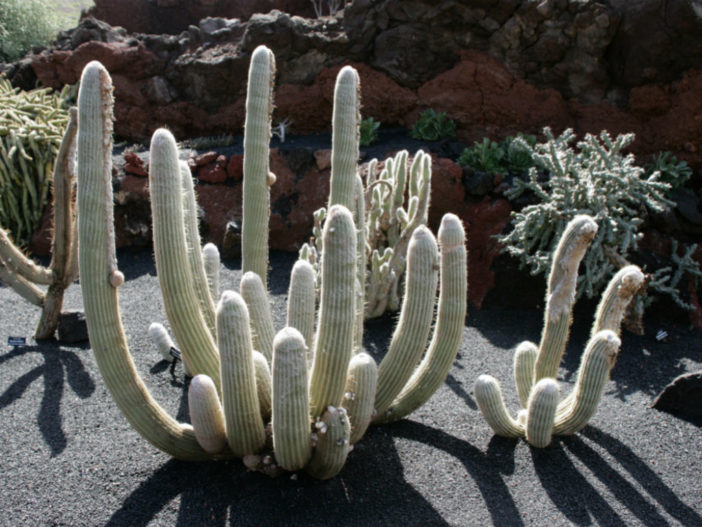Espostoa is a genus of 16 species of cacti known from the Andes of southern Ecuador and Peru. They usually grow from 2625 to 8200 feet (800 to 2500 m) above sea level.
The generic name honors Nicolas E. Esposto, a renowned botanist from Lima.
Espostoas are columnar cacti that mostly branch at the base to form a series of stems reminiscent of a big city skyline. The most notable feature of Espostoas is a presence in most species of dense white hair, which quite dramatically covers the stems giving them a soft fuzzy appearance. However, this is just an illusion, as underneath the soft hairs are numerous sharp spines arranged on many small ribs that circle the columns. In some species, the main central spine extends well past the hair making their threatening presence obvious.
Another trait of Espostoas seen in mature stems is the flower-bearing lateral cephalium, an area along the stems that produce especially dense wool and/or bristles from which the flowers appear. These structures are brown, gray, or white and look like something was smeared along one side of the stem. Flowers are cup or bell-shaped and typically 1 to 2 inches (2.5 to 5 cm) in diameter. They are usually white or rarely reddish and nocturnal. Fruits are edible, sweet, and juicy.

Growing Conditions and General Care
Several species of Espostoa are especially popular in cultivation due to their fuzzy white hairy appearance. Large commercial growers sell the plants as up to 12 inches (30 cm) long stems. However, these plants do not grow nearly as vigorously in pots as in the ground. Instead, plants quickly fill the pots, becoming pot-bound, and then growth slows to a crawl. As a result, these plants rarely, if ever, reach maturity, meaning they do not produce cephalium and, subsequently, do not flower. On the other hand, those in warmer climates that can plant the species directly in the ground may indeed have plants that form a nice grouping of stems that will eventually flower.
Like most cacti, Espostoas require a sunny location and well-drained soil. In summer, they appreciate fertilizer and wetter conditions. In winter, they need rest, but the temperature must not drop below 54 °F (12 °C).
They are appreciated for their decorative qualities due to their white fleece.
Propagation
Espostoas can be successfully propagated by cuttings and seeds. The seeds are quite easy to germinate. Their main requirements include high humidity levels, free-draining soil mix, and enough water, light, and nutrition.
Links
- Back to genus Espostoa
- Succupedia: Browse succulents by Scientific Name, Common Name, Genus, Family, USDA Hardiness Zone, Origin, or cacti by Genus